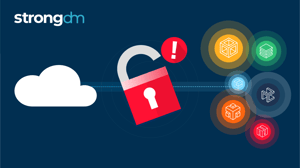IT Onboarding Checklist: 2025 Technical Staff Onboarding
-2.jpg?width=780&height=438&name=6204203834ab087d3bd81339_Technical-staff-onboarding(1)-2.jpg)

Written by
Dominic GarciaLast updated on:
July 10, 2025Reading time:
Contents
Built for Security. Loved by Devs.
- Free Trial — No Credit Card Needed
- Full Access to All Features
- Trusted by the Fortune 100, early startups, and everyone in between
Congratulations! A new technical hire is joining the team. You’ve both worked hard to get to this point, and an effective onboarding process will help ensure that the relationship is a long and fruitful one.
Because each new job comes with specific tech, culture, and expectations, the learning curve can be steep for even the most experienced employees. Thus, an effective onboarding process must:
- Introduce technologies, tools, and workflows used on the job.
- Build community, belonging, and team cohesion.
- Outline the mission, values, and history of the organization.
Use this onboarding checklist any time a technical employee joins the company.
Preboarding: Day 0
Take care of basic administrative tasks ahead of the official start date so your new hire can jump right into the good stuff on day one.
Create an Email Address
Assign a company email address. Your new hire will use this to access other accounts, and it will be your primary contact point throughout the onboarding phase.
Complete “Paperwork”
You can process the initial legal, payroll, and other HR paperwork electronically, in advance of your new employee’s first day. Create a profile on your HR software, and invite them to sign and file documents including:
- tax forms
- billing/direct deposit information
- benefits packages
- non-disclosure agreements
- legal/policy agreements
- employee handbooks
- other documentation required by your organization
Assign Access to Tools, SSO, and Non-technical Software
Create a list of productivity tools and non-technical software your new staff member will require. Prepare access in advance so they can get started quickly on day one.
Organize the Physical Workspace
Set up their physical workstation including desk/chair, computer, printer, and any office supplies they may require.
Ease their transition to the physical office by anticipating common questions such as where to park, which access codes are required to enter the building, who they should check in with when they arrive, etc. This is a great opportunity for a bit of personalization—offer a welcome basket, or follow the lead of Netflix, which famously shows their love by asking new hires their preferred laptop choice and configuration.
Virtual Onboarding: What if Your Workforce is Remote?
You can easily tailor your onboarding program to suit the needs of a remote, hybrid, or BYOD workforce. Mail an onboarding kit of fun company swag to help new employees feel like a part of the team no matter where they put their desks. Walk them through security best practices as they onboard with their own devices, or send them a pre-configured laptop so they’re ready to go.
Prepare a Schedule
Create and share a first-day schedule to help your new hire know what to expect.
The schedule may include:
- start time
- buddy introduction
- welcome and orientation
- workspace preparation and setup
- mentor/manager meeting
- lunch, perhaps a team welcome lunch
- technical trainings
- downtime/unscheduled time
- end time
First Day
Welcome New Hires
Cultivate community from day one. Assign a buddy who can answer questions, introduce other members of the team, and help new employees find their footing.
Introduce Company Culture
Set aside time to share your organization’s mission, values, and history. Give new hires a chance to meet with leaders, and encourage them to ask in-depth questions.
Outline Job Duties and Team Dynamics
Help your new employee understand team dynamics, job responsibilities, and other requirements for their new role. This orientation should answer basic questions such as: What are the specific goals and expectations of the job? Who does what on the team? Who will they report to? Who do they interact with on a day-to-day basis? Who should they turn to with questions? Clarity around expectations will boost confidence and help your new hire integrate more quickly.
Grant Access to Technical Systems
Assign roles and provision access to the technologies they will need. These may include specialized and highly-privileged systems such as databases, servers, Kubernetes containers, cloud CLIs, microservices, and infrastructure-as-code tools.
Build Relationships
New hires naturally have a lot of questions. Support their curiosity and help them feel welcome by hosting meet-and-greets with important co-workers, including managers of adjacent departments, programming partners, and other members of the team.
Begin Job-Specific Training
Once new employees have met with the team and gained access to the required technologies, managers and peers can begin training them in the work they will be doing for your organization. Even the most experienced employees need a formal introduction to the tech, tools, workflows, and processes used in your organization. Give new hires a chance to practice in a low-risk setting before jumping into high-pressure assignments. A few easy wins will boost confidence, build coherence with the team, and ramp up productivity.
First Week(s)
Mentor Check-ins
The first week or two provide further opportunities to get off to a good start. In addition to continued technical training and team integration, schedule daily one-on-one meetings between your new hire and a manager or mentor in this early phase.
These meetings support a smooth onboarding process by giving new technical staff an opportunity to ask questions, express concerns, request support, share ideas, and get and give feedback. After the initial onboarding phase is over, settle into a regular cadence of weekly or monthly mentor check-ins.
Conclusion
Onboarding is about more than filling out paperwork, setting up workstations, and provisioning access. It’s about establishing a new relationship that will benefit both employees and the company, hopefully for many years to come.
Over time, you can tailor these practices to fit the particular needs of your organization. Check-in with new hires and seasoned staff. Ask for feedback. With a little effort, your onboarding experience will grow into a key tool for keeping your employees engaged, happy, and productive.
Getting started is as easy as downloading the technical staff onboarding checklist.
Looking for a technical staff offboarding checklist? Learn more about our technical staff offboarding checklist here.
Want to simplify onboarding even more? Book a demo of StrongDM today.
Next Steps
StrongDM unifies access management across databases, servers, clusters, and more—for IT, security, and DevOps teams.
- Learn how StrongDM works
- Book a personalized demo
- Start your free StrongDM trial

Categories:

About the Author
Dominic Garcia, Technical Marketing Expert, has held marketing leadership roles for Silicon Valley technology companies specializing in database, data management, and data analytics solutions. As head of content marketing at Splunk, Dominic contributed to boosting the company’s market visibility and its growth from a $100M to a $1.3B company. He brings relentless creativity to the task of connecting people with technical products to improve their lives. Dominic holds a B.S. degree in Public Relations from the University of Texas at Austin. To contact Dominic, visit him on LinkedIn.
You May Also Like




